
|
Projects
Processes
Power Tools
Resources |
Wood SpeciesNotes, Pictures and Links on Wood SpeciesThe information gathered here is primarily for my own reference. The last time I counted, I had 29 different wood species. This includes close relatives such as English walnut, black walnut and claro walnut, but not variations within a species due to figuring, spalting, etc. Density, Hardness, Shrinkage and T/R Ratio are taken from The Wood Database. Hardness is the Janka hardness. Shrinkage is volumetric (as opposed to radial or tangential). The T/R Ratio is the ratio of tangential to radial shrinkage. A B C D E F G H I J K L M N O P Q R S T U V W X Y Z  Bloodwood (Brosimum rubescens) SatineDensity: 66 lbs/ft3 / 1,050 kg/m3, Janka hardness: 2,900 lbf / 12,900 N, Volumetric Shrinkage: 11.7%, T/R Ratio: 1.5.
Workability: ... extremely dense ... pronounced blunting effect on cutters ... tends to be brittle and can splinter easily while being worked ... bear with the difficulties ... rewarded with an exceptional and lustrous red surface.
Allergies/Toxicity: ... dust has been reported as occasionally causing effects such as thirst and salivation, as well as nausea. Can also cause skin irritation.
Sustainability: ... not listed in the CITES Appendices or on the IUCN Red List of Threatened Species.
I have just a ¼" x 1½" x 16" piece that I bought by mail from Woodcraft (Item # 158572). I think that the Wood Database overstates the brightness of the color. I don't think I'll get any more as padauk is easier to source and work with. Then there's also redheart.
   Bocote (Cordia spp.)Density: 53 lbs/ft3 / 855 kg/m3, Janka hardness: 2,010 lbf / 8,950 N, Volumetric Shrinkage: 11.6%, T/R Ratio: 1.9.
Workability: ... may contain silica that will dull cutters. On the whole ... easily worked and machined with good results ... gluing is usually problem-free ... turns and finishes well.
Allergies/Toxicity: ... has been shown to cause cross reactions once an allergic sensitivity ... has been developed. Woods that can cause initial sensitivity include: Pau Ferro, Macassar Ebony, Cocobolo, and most Rosewoods.
Sustainability: ... not listed in the CITES Appendices or on the IUCN Red List of Threatened Species%.
I have ¼" and ¾" thick stock from Rockler. I've used it in coasters and puzzle boxes. The striking color pattern livens things up when a reasonably wide piece is used but it doesn't do much if used only sparingly. I've also purchased a 2" square by 12" long turning blank from Craft Supplies USA (Part # 1045400004) for $15.50, but after finding the redheart to be wet inside I've done nothing with it.
Bubinga (Guibourtia spp.) KevazingoDensity: 56 lbs/ft3 / 890 kg/m3, Janka hardness: 2,410 lbf / 10,720 N, Volumetric Shrinkage: 13.9%, T/R Ratio: 1.4.
Workability: Easy to work overall, though depending upon the species Bubinga can have silica present, which can prematurely dull cutting edges. Also, on pieces with figured or interlocking grain, tearout can occur during planing or other machining operations. Gluing can occasionally be problematic due to Bubinga’s high density and natural oils. Turns and finishes well.
Allergies/Toxicity: ... severe reactions are quite uncommon ... reported to cause skin irritation and/or skin lesions ...
Sustainability: Although ... not evaluated on the IUCN Red List of Threatened Species ... listed on CITES appendix II—which also includes finished products made of the wood.
I have 24" of ¾" thick by 3" wide stock from Rockler. I haven't done anything with it yet.
   Canarywood (Centrolobium spp.) CanaryDensity: 52 lbs/ft3 / 830 kg/m3, Janka hardness: 1,520 lbf / 6,750 N, Volumetric Shrinkage: 8.4%, T/R Ratio: 2.3.
Workability: Easy to work with both hand and machine tools, though some tearout can occur during planing on pieces with wild or irregular grain. Good dimensional stability. Turns, glues and finishes well. I've found this to be generally true. I get a little surface tearout when turning, less with the skew chisel than the skewchigouge, but I still have to resort to medium sandpaper. A Danish oil finish looks good.
Allergies/Toxicity: Besides the standard health risks ... no further health reactions.
Sustainability: ... not listed in the CITES Appendices or on the IUCN Red List of Threatened Species.
I bought a ¾" thick by 5" wide by 24" long piece by mail from Woodcraft (Item # 161717). I used some to make a lift-lid box. I also have two rough-cut pieces ¾" thick by 3" wide and 24" long bought in a three-piece sale pack from Woodcraft. I cut a piece and glued it up to turn a screwdriver handle. Then I bought a 1½" x 1½" x 12" piece from Woodcraft (order WO083000304277, 01/05/2021, Item # 158373). I measured its density as 791 kg/m3.
 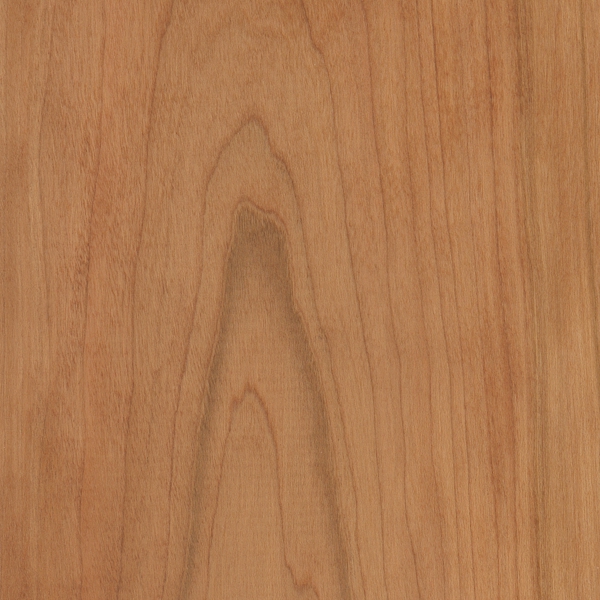 Cherry, Black (Prunus serotina) Cherry, American CherryDensity: 35 lbs/ft3 / 560 kg/m3, Janka hardness: 950 lbf / 4,230 N, Volumetric Shrinkage: 11.5%, T/R Ratio: 1.9.
Workability: Cherry is known as being one of the best all-around woods for workability. I've turned a piece of a 2" square by 6" long blank to make a handle for a ratcheting screwdriver and have to agree with the very good working characteristics. It also finished nicely with Danish oil.
Black cherry is distinct from sweet or European cherry. The grain pattern of this wood isn't very interesting on small pieces, so I use it mainly for color contrast. I bought a variety of ¼" and ¾" thick stock from Rockler and Woodcraft plus two 2" square by 6" long turning blanks from Woodcraft. I measured the density of the turning blanks at 658 and 719 kg/m3, 17% and 28% above the figure given in the Wood Database. I used the denser one for turning my second screwdriver handle.
Ebony, Brazilian (Swartzia stipulifera Harms, Swartzia panacoco) Panacoco, Wamara, Gombeira, Coracao de negroDensity: 67 lbs/ft3 / 1,080 kg/m3, Janka Hardness: 3,660 lbf / 16,260 N, Volumetric Shrinkage: 12.3%, T/R Ratio: 1.6.
Workability: ... considered difficult to work on account of its high density ... moderate to high blunting effect on cutters, and if there is interlocked grain present, tearout can occur during planing. Can be troublesome to glue because of its high density and natural oils present.
Workability: (according to Woodcraft) Machines and turns well.
Allergies/Toxicity: ... reported to cause respiratory irritation in some individuals. I have had no problem with this.
I bought two 1½" x 1½" x 13½" pieces on sale from Woodcraft (order WO083000304277, 01/05/2021, Item # 175802). They arrived labelled as Gombeira. I measured their densities as 1,178 and 1,241 kg/m3, which makes them the densest wood I have. The table saw begins to struggle with this wood but the cut surface is fine on both end- and face-grain. The color is a blotchy mix of purplish-brown and pale yellow, which I thought was an attempt to dye a different wood until I read the description at warmoth.
Goncalo Alves (Astronium spp.) Tigerwood, JobilloDensity: 57 lbs/ft3 / 905 kg/m3, Janka hardness: 2,170 lbf / 9,640 N, Volumetric Shrinkage: 11.2%, T/R Ratio: 1.9.
Workability: ... generally not too difficult to work, despite its high density. Figured pieces with irregular grain can pose a challenge in planing and machining operations ... can also have a moderate blunting effect on cutters. The wood is very resistant to moisture absorption, which can make it difficult to glue but I have not found this ... turns and finishes well.
Allergies/Toxicity: ... severe reactions ... uncommon ... reported as a sensitizer ... eye and skin irritation.
Sustainability: ... not listed in the CITES Appendices or on the IUCN Red List of Threatened Species..
I have two rough-cut pieces ¾" thick by 3" wide and 24" long bought in a three-piece sale pack from Woodcraft. At first, I had trouble convincing myself that I knew which pieces were goncalo alves and which were macacauba. I think I've identified the macacauba and so what's left is presumably goncalo alves. I measured the density of one of the pieces that I think is goncalo alves as 743 kg/m3. I've not done anything with this yet.
 Jatoba (Hymenaea courbaril) Brazilian CherryDensity: 57 lbs/ft3 / 910 kg/m3, Janka hardness: 2,690 lbf / 11,950 N, Volumetric Shrinkage: 12.1%, T/R Ratio: 1.9.
Workability: ... considered difficult to work with ... density and hardness ... moderate blunting effect on tool cutters ... tends to be difficult to plane without tearout due to its interlocking grain ... glues, stains, turns, and finishes well.
Allergies/Toxicity: ... severe reactions ... uncommon ... reported to cause skin irritation.
Sustainability: ... not listed in the CITES Appendices ... IUCN ... species of least concern.
I bought ¾" thick by 3" wide stock from Woodcraft (Item # 124118). I measured the density as 1,029 kg/m3. I've used some of it in for the carcase of a slab-lid box.
Lacewood (Panopsis rubescens / sessilifolia)I don't have any of this. I think I put it here for comparison with leopardwood.
   Leopardwood (Roupala montana / brasiliense)Density: 55 lbs/ft3 / 885 kg/m3, Janka hardness: 2,150 lbf / 9,560 N, Volumetric Shrinkage: 11.5%, T/R Ratio: 2.5.
Workability: Fairly difficult to work because of its high density and tendency to tearout during planing ... glues and finishes well.
Allergies/Toxicity: Although there have been no adverse health effects reported for Lacewood in the Roupala genus, several other genera in the Proteaceae family have been reported to cause eye and skin irritation.
Sustainability: ... not listed in the CITES Appendices or on the IUCN Red List of Threatened Species.
I have ¼" thick stock from Rockler and some ¾" thick by 5" wide stock from Woodcraft (Item # 167022). I've made the carcase of a slab-lid box and the top panel of a lift-lid box from this and used it in coasters and a puzzle box.
  Macacauba (Platymiscium spp.) Macawood, Hormigo, Orange Agate, GranadilloDensity: 59 lbs/ft3 / 950 kg/m3, Janka hardness: 2,700 lbf / 12,030 N, Volumetric Shrinkage: 7.2%, T/R Ratio: 1.5.
Workability: Overall, good working characteristics for both hand and machine tools, though areas of interlocked grain should be approached with care to avoid tearout. Able to take a very high natural polish. Turns and glues well.
Allergies/Toxicity: Besides the standard health risks ... no further health reactions.
Sustainability: not listed in the CITES Appendices or on the IUCN Red List of Threatened Species ...
I have two rough-cut pieces ¾" thick by 3" wide and 24" long bought in a three-piece sale pack from Woodcraft. I at first had trouble convincing myself that I know which pieces were macacauba and which were goncalo alves. But, another name used for this wood is granadillo and I eventually found images online under this name that matched my wood (but, see below). I measured the density of one of the pieces as 1,245 kg/m3.   Then, again from Woodcraft, I ordered some 1½" x 1½" x 12" (nominal) turning blanks and found that there are separate products listed as macacauba (Item # 166596) and granadillo (Item # 841752). I measured the density of the piece labelled macacauba as 695 kg/m3 and the piece labelled granadillo as 996 kg/m3. Neither of them really look like the first pieces I received. What a puzzle. The "macacauba" piece did not saw like the macacauba slabs, had a very rough texture and looked completely different. I tried turning it and the results were terrible. I got terrible surface tear-out, depending on the grain direction, even with the skew, although rolling a half-bead at the end of the piece wasn't so bad. By the time I gave up and brought out the coarse sandpaper, the piece was only big enough for a small screwdriver handle. The "granadillo" piece sawed cleanly. It has a corner that is very pale in color; I assume this is sapwood. Turning it wasn't terrible, but it wasn't good either. I got some chipout, more with the skewchigouge than with the skew chisel. To decide whether to proceed or scrap it, I applied Danish oil without having sanded. The result was similar to the boards in color and grain but completely lacked the chatoyance. So, I can believe that this came from the same species of tree. Partly because it was already on the small side, partly to get rid of the pale part, which was still showing, and partly for symmetry, I made this into a small handle also.
Mahogany, African (Khaya spp.)Density: 40 lbs/ft3 / 640 kg/m3, Janka hardness: 1,070 lbf / 4,760 N, Volumetric Shrinkage: 10.0%, T/R Ratio: 1.4.
Workability: Easy to work, glue, and finish. Tearout can sometimes be a problem if the grain is interlocked.
Allergies/Toxicity: ... severe reactions ... uncommon ... reported as a sensitizer ... eye and skin irritation.
I have a 1½" square by 6" long turning blank from Rockler. I measured its density as 481 kg/m3. I have not done anything with it yet.
Mahogany, Honduran (Swietenia macrophylla) Genuine Mahogany, Honduras MahoganyDensity: 37 lbs/ft3 / 590 kg/m3, Janka hardness: 900 lbf / 4,020 N, Volumetric Shrinkage: 7.5%, T/R Ratio: 1.5.
Workability: ... very easy to work with tools: machines well ... (... figured grain ... tearout or chip ...) Slight dulling of cutters can occur. Sands very easily. Turns, glues, stains, and finishes well.
Allergies/Toxicity: ...
Sustainability: This wood species is in CITES Appendix II, and is on the IUCN Red List. Export is limited to certified sustainable sources.
I have one piece ¾" thick by 3" wide and 24" long bought from Woodcraft, Item # 862821.
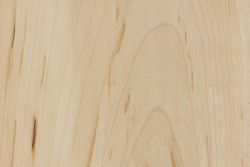   Maple, Black (Acer nigrum)Density: 40 lbs/ft3 / 640 kg/m3, Janka hardness: 1,180 lbf / 5,250 N, Volumetric Shrinkage: 14%, T/R Ratio: 1.9.
Workability: Fairly easy to work with both hand and machine tools, though slightly more difficult than soft maple due to black maple’s higher density. Maple has a tendency to burn when being machined with high-speed cutters such as in a router. Turns, glues, and finishes well, though blotches can occur when staining, and a pre-conditioner, gel stain, or toner may be necessary to get an even color. I've turned with pieces of a 2" square by 24" long blank I bought from Rockler looking for, but not finding, good figure. From this I made a ratcheting screwdriver handle and the handle of my skew chisel. I experienced some surface tearout, less with a planing cut using the skew than using the skewchigouge, but overall I found it easy enough to work (not as easy as cherry, though).
Allergies/Toxicity: ... along with other maples in the Acer genus [has] been reported to cause skin irritation, runny nose, and asthma-like respiratory effects.
Sustainability: ... not listed in the CITES Appendices or on the IUCN Red List of Threatened Species.
I'm guessing that the maple I have is black maple because that grows in the northeastern United States. Some of it could be bigleaf maple. It's a very pale colored wood and the grain itself isn't very interesting so I'm using it for figured grain. I have various pieces of curly and quilted maple from Rockler, Woodcraft and eBay. I measured the density of a block from eBay as 545 kg/m3. I have the impression that curl figure in maple is strongest when the growth rings intersect the surface at an angle and weak or absent when the growth rings are parallel to the surface. Bird's eye figure seems to be quite the other way around. I'm not sure about quilted figure.
Maple, Bigleaf (Acer macrophyllum) Oregon MapleDensity: 34 lbs/ft3 / 545 kg/m3, Janka hardness: 850 lbf / 3,780 N, Volumetric Shrinkage: 11.6%, T/R Ratio: 1.9.
Workability:Fairly easy to work with both hand and machine tools, though maple has a tendency to burn when being machined with high-speed cutters such as in a router. Turns, glues, and finishes well, though blotches can occur when staining, and a pre-conditioner, gel stain, or toner may be necessary to get an even color.
Allergies/Toxicity: ... along with other maples in the Acer genus [has] been reported to cause skin irritation, runny nose, and asthma-like respiratory effects.
Sustainability: ... not listed in the CITES Appendices or on the IUCN Red List of Threatened Species.
I purchased a 2" square by 12" long "figured Western maple" turning blank from Craft Supplies USA (Part # 1045480004) for just $5.50, but after finding the redheart to be wet inside I've done nothing with it.
 Marblewood (Zygia racemosa) Angelim RajadoDensity: 63 lbs/ft3 / 1,005 kg/m3, Janka hardness: 2,530 lbf / 11,250 N, Volumetric Shrinkage: 17.5%, T/R Ratio: 1.8.
Workability: Tends to be difficult to work on account of its high density. Marblewood can have a moderate to severe blunting effect on tool cutters. Glues, turns, and finishes well — though there is a high risk of checking and resin exudation during drying. To me it seems to work OK allowing for a lot of additional effort. Drilling with a 5/8" forstner bit was especially difficult. Turning with the skewchigouge leaves a poor finish, but a light pass with the skew chisel cleans it up nicely. Then I had to re-sharpen the tools.
Allergies/Toxicity: ... no known adverse health effects ...
I bought a 2" square by 6" long turning blank from Woodcraft (Item 154603, $8.49). I measured its density as 1,004 kg/m3. I cut it up to make a screwdriver handle and there were a few small slabs left over.
 Olivewood (spp.) OlivewoodDensity: 62 lbs/ft3 / 990 kg/m3, Janka hardness: 2,700 lbf / 12,010 N, Volumetric Shrinkage: 14.4%, T/R Ratio: 1.6.
Workability: Somewhat easy to work ... has high movement in service ... poor stability. Turns superbly. Glues and finishes well. I agree with turning and finishing well.
Allergies/Toxicity: ... severe reactions ... uncommon ... reported as a sensitizer ... eye and skin irritation.
I have a 1½" x 1½" x 12" (nominal) turning blank bought on sale from Woodcraft (order WO083000304277, 01/05/2021, Item # 838042). Its density is 861 kg/m3. I started turning a 5" piece for a screwdriver handle, but hit a split in the wood. I ended up with a small fake pepergrinder. I've also purchased a 2" square by 12" long Arican olivewood turning blank from Craft Supplies USA (Part # 1045320003) for $24.10, but after finding the redheart to be wet inside I've done nothing with it.
 Osage Orange (Maclura pomifera) Horse Apple, Hedge Apple, Bois d’arcDensity: 54 lbs/ft3 / 855 kg/m3, Janka hardness: 2,620 lbf / 11,640 N, Volumetric Shrinkage: 9.2%, T/R Ratio: 1.5.
Workability: ... can be difficult due to its hardness and density ... reported to have little dulling effect on cutting edges ... turns well ... takes stains, glues and finishes well.
I have a ¾" thick by 5" wide by 24 long piece that I bought by mail from Woodcraft (Item # 163224). I cut one edge off to make a slab-lid box.
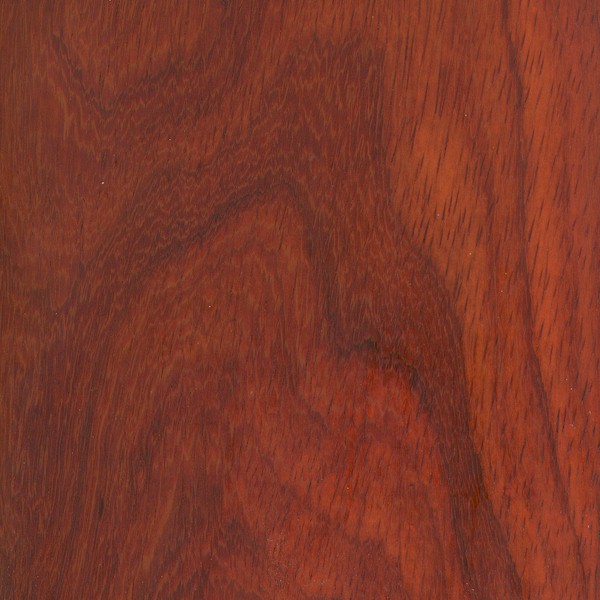  Padauk, African (Pterocarpus soyauxii) VermillionDensity: 47 lbs/ft3 / 745 kg/m3, Janka hardness: 1,970 lbf / 8,760 N, Volumetric Shrinkage: 7.6%, T/R Ratio: 1.6.
Workability: ... easy to work tearout ... during planing on quartersawn or interlocked grain ... turns, glues, and finishes well.
Allergies/Toxicity: ... severe reactions ... uncommon ... reported as a sensitizer ... eye, skin and respiratory irritation. I have not experienced this ... yet.
Sustainability: ... not listed in the CITES Appendices or on the IUCN Red List of Threatened Species.
I have ¼" and ¾" stock from Rockler and lots of ¾" thick by 4" wide stock from Woodcraft. I'm using this a lot because of its striking orange / red color.
 Pau Rosa (Bobgunnia fistuloides, B. madagascariensis)Density: 64 lbs/ft3 / 1,030 kg/m3, Janka hardness: 2,940 lbf / 13,080 N, Volumetric Shrinkage: 10.7%, T/R Ratio: 1.4.
Workability: Generally easy to work despite its density ... cutting resistance can be high ... tendency to burn while being drilled. Planes fairly well ... Turns, glues, and finishes well. I found this wood easy to turn. After a fine planing cut with a skew chisel, I began sanding at 240 grit.
Allergies/Toxicity: ... severe reactions ... uncommon ... reported to cause skin irritation. I wore an extra sweatshirt around my waist and had no issues.
I bought a 1½" x 1½" x 12" turning piece from Woodcraft (order WO083000304277, 01/05/2021, Item # 826658). I measured its density as 1,031 kg/m3.
   PurpleheartDensity: 56 lbs/ft3 / 905 kg/m3, Janka hardness: 2,520 lbf / 11,190 N, Volumetric Shrinkage: 10.6%, T/R Ratio: 1.7.
Workability: ... can present some unique challenges: if the wood is heated with dull tools, or if cutter speeds are too high, Purpleheart will exude a gummy resin that can clog tools and complicate the machining process. Depending on the grain orientation, can be difficult to plane without tearout ... moderate dulling effect on cutters.
Allergies/Toxicity: ... reported as a sensitizer ... eye and skin irritation ... nausea.
I have a ¾" thick by 3" wide piece. I've used this wood in coasters and small boxes, mainly because I have a friend who is very, very keen on the color purple.
 Redheart (Erythroxylum spp. and Simira spp.) Chakte KokDensity: 40 lbs/ft3 / 640 kg/m3, Janka hardness: 1,210 lbf / 5,380 N, Volumetric Shrinkage: 10.6%, T/R Ratio: 2.9.
Workability: ... good working characteristics, and planes, machines, and sands well. Turns, glues, and finishes well ... brown color shift ... I've found this to be true. The table saw leaves a smooth surface and turning with a skew chisel needs very little sanding.
Allergies/Toxicity: Besides the standard health risks ... no further health reactions.
Sustainability: ... not listed in the CITES Appendices or on the IUCN Red List of Threatened Species.
I bought a 1½" x 1½" x 12" turning piece from Woodcraft (order WO083000304277, 01/05/2021, Item # 838090). I measured its density as 733 kg/m3. From a 5" length, I made a screwdriver handle and I cut the rest up, except for scraps, as an accent wood for bud vases. I bought a 2" x 2" x 12" turning blank of "Honduras Redheart" from Craft Supplies USA for the top part of the vases. This arrived with a page and a third of instructions on how to deal with "Unseasoned Bowl Blanks". There was no mention of spindle blanks. So, I stripped the wax from the face grain, expecting this to help final drying. About two weeks later, I cut off the short piece I needed and found it wet inside. Air drying this piece overnight resulted in radial cracks and it was ruined. Note that this wood has an unusually high tangential to radial shrinkage ratio of 2.9. For comparison, black cherry and black maple are 1.9. I put the remainder and the other Craft Supplies USA blanks in newspaper bags while I think about this.
   Rosewood, Bolivian (Machaerium spp.) Pau Ferro, Morado, Santos RosewoodDensity: 54 lbs/ft3 / 865 kg/m3, Janka hardness: 1,960 lbf / 8,710 N, Volumetric Shrinkage: 9.9%, T/R Ratio: 2.4.
Workability: considered overall to be of fair workability, as it can blunt the cutting edges of tools, and any irregular grain has a tendency to tearout during machining operations ... many of the same challenges in gluing rosewoods are common to Pau Ferro ... turns and finishes well.
Allergies/Toxicity: ... severe reactions are quite uncommon ... reported as a sensitizer ... eye and skin irritation. Anecdotal evidence suggests that there is a high rate of reaction among woodworkers, and the wood contains the very same sensitizing substances as those found in rosewoods (Dalbergia genus).
'''Sustainability: ... not listed in the CITES Appendices ... many of the species within the Machaerium genus are reported by the IUCN as being of least concern ... exception is Machaerium villosum from Brazil ... vulnerable due to deforestation.
This is not "real" rosewood (of the Dalbergia genus, for which it is used as a substitute) is not listed in the CITES Appendices and has no reported sustainability issues. It does, however, have the same sensitizing substances and can cause eye and skin irritation. I started with ¼" thick stock from Rockler from which I've made coasters and a puzzle box. Then I bought a piece ¾" thick by 3" wide by 24" long from Woodcraft (Item # 06A53). Using this, I made a slab-lid box. I like the appearance of this wood so much that when I placed another Woodcraft order, I bought another similar piece. I measured the density of this to be 887 kg/m3. I've also purchased a 2" square by 12" long turning blank from Craft Supplies USA (Part # 1055430002) for $16.90, but after finding the redheart to be wet inside I've done nothing with it.
 Rosewood, Patagonia (Anadenanthera colubrina) Curupay, CebilDensity: 64 lbs/ft3 / 1,025 kg/m3, Janka hardness: 3,630 lbf / 16,150 N, Volumetric Shrinkage: 12.0%, T/R Ratio: 1.7.
Workability: Generally hard to work with on account of its irregular grain and high density. Also has a pronounced blunting effect on cutters. Turns well. My piece sawed well but turned with a lot of surface tear-out, even a light planing cut with a skew chisel. The sawed surface sanded and finished beautifully.
Allergies/Toxicity: Besides the standard health risks ... no further health reactions.
Sustainability: Not listed in the CITES Appendices, IUCN species of least concern. This is not "real" rosewood (of the Dalbergia genus).
I bought a 2" square by 6" long (nominal) turning blank from Woodcraft (Item # 164494, $6.50.) I measured its density as 1,016 kg/m3. I cut it up to make a screwdriver handle and there were a few small slabs left over.
 Sycamore (Platanus occidentalis) American PlaneDensity: 34 lbs/ft3 / 545 kg/m3, Janka hardness: 770 lbf / 3,430 N, Volumetric Shrinkage: 14.1%, T/R Ratio: 1.7.
Workability: ... works easily with both hand and machine tools ... turns, glues, and finishes well.
I bought a 1½" square by 6" long turning blank from Rockler but used most of it to make the fish coasters.
  Walnut, Black (Juglans nigra)Density: 38 lbs/ft3 / 610 kg/m3, Janka hardness: 1,010 lbf / 4,490 N, Volumetric Shrinkage: 12.8%, T/R Ratio: 1.4.
Workability: Typically easy to work provided the grain is straight and regular. Planer tearout can sometimes be a problem when surfacing pieces with irregular or figured grain. Glues ... and finishes well.
Allergies/Toxicity: ... severe reactions ... uncommon ... reported as a sensitizer ... eye and skin irritation.
Sustainability: ... not listed in the CITES Appendices or on the IUCN Red List of Threatened Species.
When I first began buying wood (from Rockler) I concentrated on domestic woods, which felt more familiar. I call them the ice-cream woods (maple, walnut and cherry). The walnut looks rather pale to be called "black walnut", but that's what I have to assume it is. I bought mostly ¼" thick pieces which ended up in my early projects, including opus one and many of my coasters. After taking the opposite approach and buying mainly exotic woods, I came back to walnut with two ¾" x 3" x 24" pieces from Woodcraft, Item # 159507, which are figured, one much more strongly than the other. They have measured densities of 671 and 748 kg/m3. Woodcraft clearly states that they are black walnut (Juglans nigra) but they are still quite pale for this name.
   Walnut, Claro (Juglans hindsii or californica) California Black WalnutDensity: 40 lbs/ft3 / 640 kg/m3, Janka hardness: 1,130 lbf / 5,030 N, Volumetric Shrinkage: 10.7%, T/R Ratio: 1.5.
Workability: Typically easy to work provided the grain is straight and regular. Planer tearout can sometimes be a problem when surfacing pieces with irregular or figured grain. Glues ... and finishes well.
Allergies/Toxicity: Other species in the Juglans genus (such as Black, and English Walnut) have been reported as sensitizers, and Claro Walnut is likely to generate similar allergic reactions ... eye and skin irritation.
I have some claro walnut from eBay in the form of lumber blocks and bookmatched scales. Some of it is curly and some is burl. A lot has gone into making small boxes, both the carcase and lids. I measured the density of a section of a large curly block as 483 kg/m3, but I had previously observed that this block was unusually light and also soft, so this was not surprising.
  Walnut, English (Juglans regia) Circassian, European, French or Common WalnutDensity: 40 lbs/ft3 / 640 kg/m3, Janka hardness: 1,220 lbf / 5,410 N, Volumetric Shrinkage: 13.0%, T/R Ratio: 1.4.
Workability: ... easy to work provided the grain is straight and regular. Planer tearout ... surfacing pieces with irregular or figured grain. Glues, stains, and finishes well ...
Allergies/Toxicity: ... reported as a sensitizer ... eye and skin irritation.
I have some English walnut from eBay in the form of bookmatched scales. The first of these went into making small boxes. I also have a large block, 14" x 4¾" by 2 3/16", from which I might make a medium-sized box.
 Wenge (Millettia laurentii)Density: 54 lbs/ft3 / 870 kg/m3, Janka hardness: 1,930 lbf / 8,600 N, Volumetric Shrinkage: 12.9%, T/R Ratio: 1.7.
Workability: Can be difficult to work ... Blunts tool edges. Sands unevenly ... Very splintery ... risk of infection. Very large pores can be difficult to fill if a perfectly smooth/level finish is desired.
Allergies/Toxicity: Although severe reactions are quite uncommon, breathing Wenge wood dust has been reported to cause central nervous system effects, abdominal cramps, irritation of the skin and eyes, and is a sensitizer. Also, Wenge splinters tend to take longer to heal and are more likely to go septic (get infected) than splinters from other woods.
I have small pieces of wenge from Rockler and Woodcraft. I use it for decorative accents in coasters and other pieces because of its near-black color.
 Yellowheart (Euxylophora paraensis) Pau AmarelloDensity: 52 lbs/ft3 / 825 kg/m3, Janka Hardness: 1,790 lbf / 7,950 N, Volumetric Shrinkage: 12.0%, T/R Ratio: 1.2.
Workability: ... normally easy to work ... more difficult if interlocked or figured grain is present ... moderate blunting effect on cutters. Glues and finishes well.
Allergies/Toxicity: ... has been reported to cause skin irritation in some people.
Sustainability: ... not listed in the CITES Appendices or on the IUCN Red List of Threatened Species.
I bought two small turning blanks from Rockler. Most of the wood has gone into coasters.
  Zebrawood (Microberlinia brazzavillensis) ZebranoDensity: 50 lbs/ft3 / 805 kg/m3, Janka hardness: 1,830 lbf / 8,160 N, Volumetric Shrinkage: 17.8%, T/R Ratio: 1.4.
Workability: ... saws well, but can be very difficult to plane or surface ... Tearout is common ... glues and finishes well ... Sure enough, turning zebrawood produces a badly torn surface which needs medium (150 grit) sandpaper to correct.
Allergies/Toxicity: ... reported as a sensitizer ... eye and skin irritation. I have not met this problem (yet).
I first bought a small turning blank at Rockler but sawed it up to make the Bronze Pear Platform. Now I have some ½" thick by 3" wide stock also from Rockler. Also a 1½" x 1½" x 12" (nominal) turning block from Woodcraft, Item # 827375, which has a measured density of 734 kg/m3. Also one piece of veneer, see below.
Veneer — Wood Veneer Variety Pack Purchased on eBayNone of the veneer pieces were marked, so I'm trying here to figure out what I've got (note to self - don't do this again!). To view an enlarged image, right click on the thumbnail and select "View Image". Use the browser's "back" function to return.  Smoked Eucalyptus
 Waterfall Bubinga
  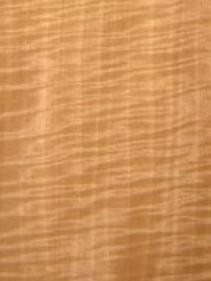 Figured AnigreI think I have one sheet of this and at first mistook it for tiger maple. Here's a page on figured anigre at Wood River Veneer.
 Cherry, BlackI have a "sideways" piece with a "Cherry" label on it and a few pieces adjacent in the delivered stack could also be cherry. One has a large knot. One has a sapwood defect and slight figure. Elsewhere in the stack is a more highly figured piece that also looks like cherry.
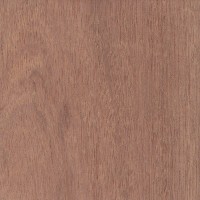 SapeleI may have one piece of this. Or it may be kosipo or some other mahogany-like wood.
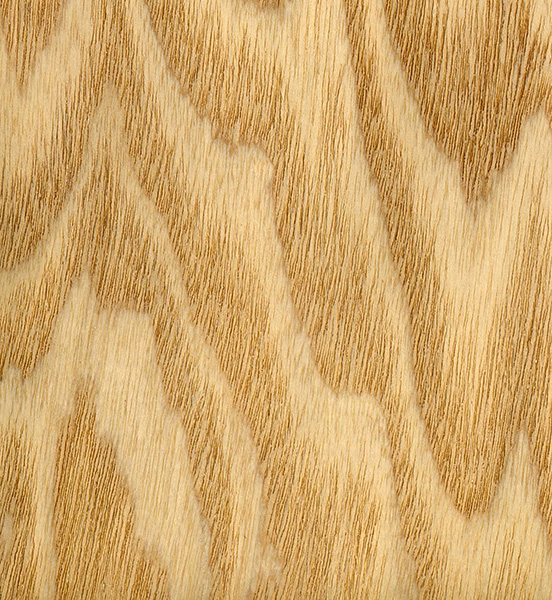 Japanese Ash (or perhaps Tamo Ash)I think I have two pieces of this, but they're kind-of two-tone and only looks like the picture on one side. Sizes are 11½" by 4½" and 10 by 5".
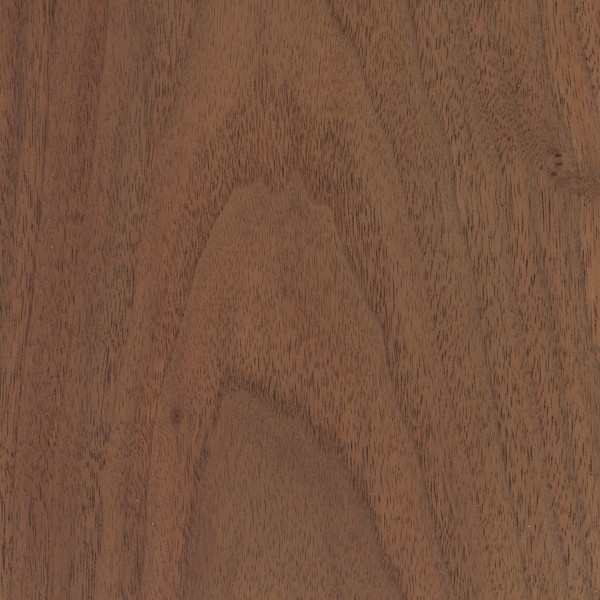 Walnut, BlackI think I have seven pieces of black walnut, but the color is more on the yellow side, less red than most of the online images. One is somewhat figured. I may have an eighth piece that is very highly figured, or this may be something else entirely.
 White OakI think I have two pieces. One is 11" by 4" with a simple, straight grain pattern, but there is a bookmatching seam close to one side so the usable width is 3¼". The other is 10¾" by 5½" and is more complex with some figure.
 Maple, BlackI have one piece, 10" by 4", of what I think is maple, rift sawn because of the fleck pattern. I'm guessing that it's black maple because that grows in the northeastern United States. Or, maybe it's sugar maple. I have another piece, 8" by 5¾", that could be flat sawn maple (it is very pale with sparse, slightly darker striations).
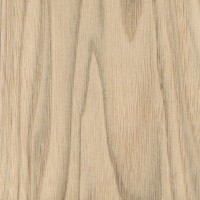 ButternutI have five pieces that look as if they could be butternut.
 Grey HazeI can't find any information about this wood species. Assuming it is grey, I don't have any.
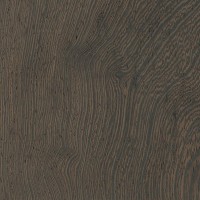 WengeI'm pretty sure I didn't get any of this.
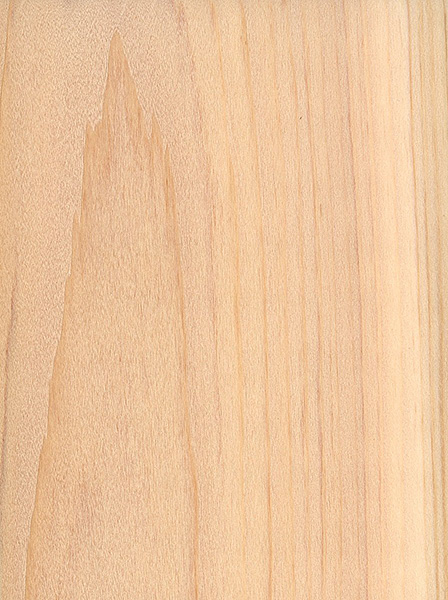 CedarI'm guessing that if there is any cedar it will be northern white just based on where it comes from.
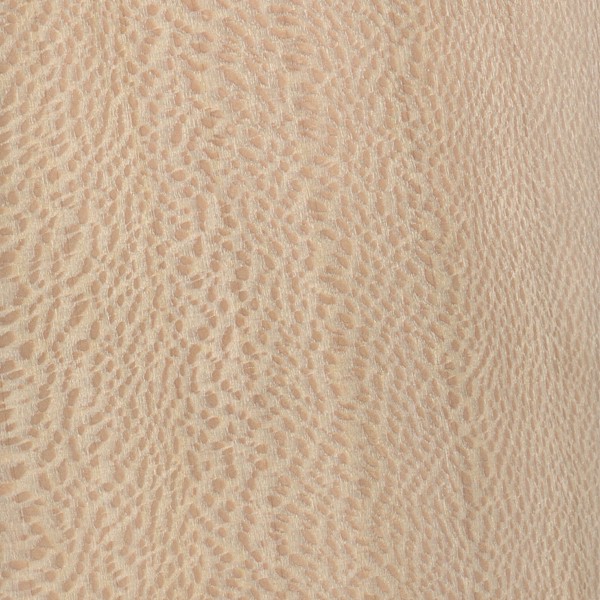 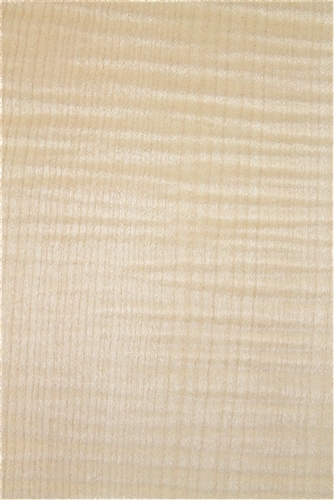 Figured Sycamore
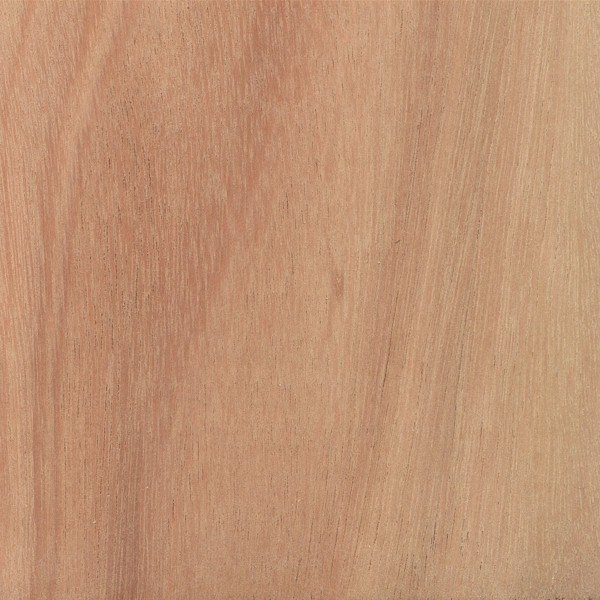 Eucalyptus (but which?)The Wood Database lists 15 species of eucalyptus in addition to the trademarked hybrid Lyptus®. I can't guess what might be in my variety pack.
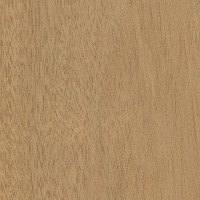 Mahogany (but which?)The Wood Database lists 8 species of mahogany - African, Cuban, Honduran, Mexican, mountain, Philippine, santos and swamp, which are spread over six different species. I have three pieces that could be some kind of mahogany. One might be sapele or kosipo. The other two have a little bit of figure. They are dark and reddish in color. I also have six pieces, up to 10" by 5¾", that are lighter in tone with no figure.
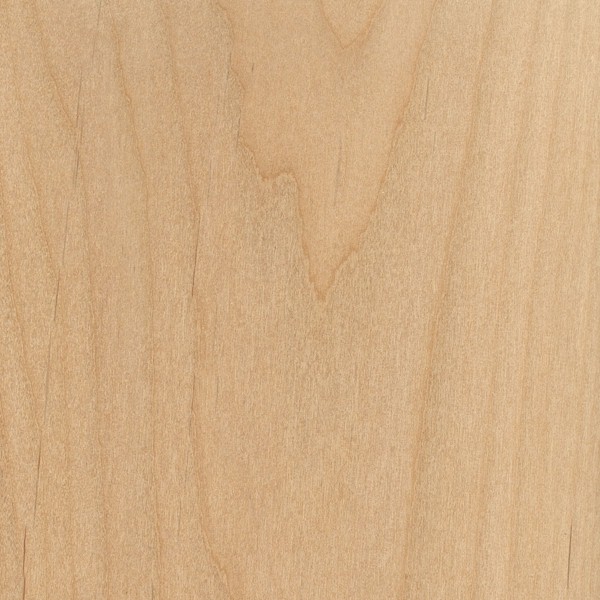 Alder, RedI'm assuming that if I have any alder it will be red alder rather than European or Nepalese alder.
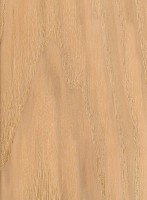 Hickory (but which?)The Wood Database lists seven types of hickory - bitternut, mockernut, nutmeg, pignut, shagbark, shellbark and water.
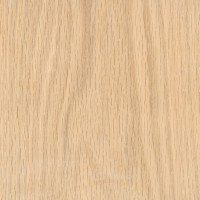 Red Oak
 KosipoI may have one piece of this. Or it may be sapele or some other mahogany-like wood.
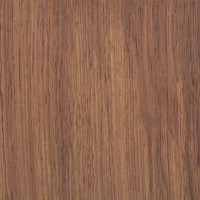 Rosewood (but which?)The Wood Database lists seven types of rosewood - Amazon, Brazilian, Burmese, East Indian, Honduran, Madagascar, Siamese, tiete and Yucatan. All but tiete, which is not in the Dalbergia species, are protected and cannot (legally) cross national boundaries.
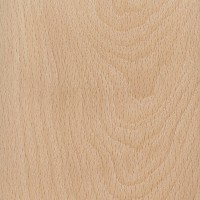 Beech, AmericanI have one piece, 10" by 3 3/8". I assume that it's American beech rather than European.
 Birch,YellowThe Wood Database lists ten types of birch - Alaska paper, alder-leaf, downy, gray, Masur, paper, river, silver, sweet and yellow, all in the Betula species. I may have two pieces of yellow birch.
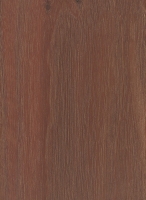 River Red GumThis was described by the eBay seller as just "Red Gum". It's very probably what is listed in the Wood Database as "River Red Gum", with the scientific name Eucalyptus camaldulensis. This can be found elsewhere called just "Red Gum".
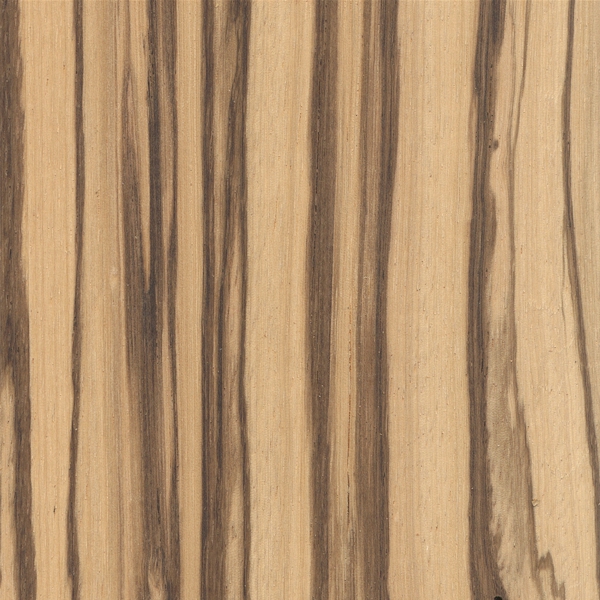 ZebrawoodI have one piece, 9" by 4¼". It seems to be rift sawn, so the bands are narrow and closely spaced, but it is very attractive. There is a knot hole close to one edge, so the usable area is reduced.
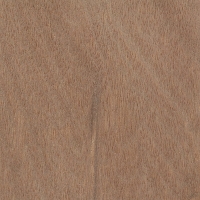 Okoume
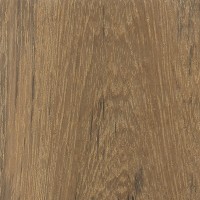 TeakI may have a couple of pieces of straight-grained, rift-sawn teak.
"plus others" (which is not helpful).I may have a couple of pieces of red oak, 11½" by 4". They look like white oak, but are redder (less yellow) in color. |